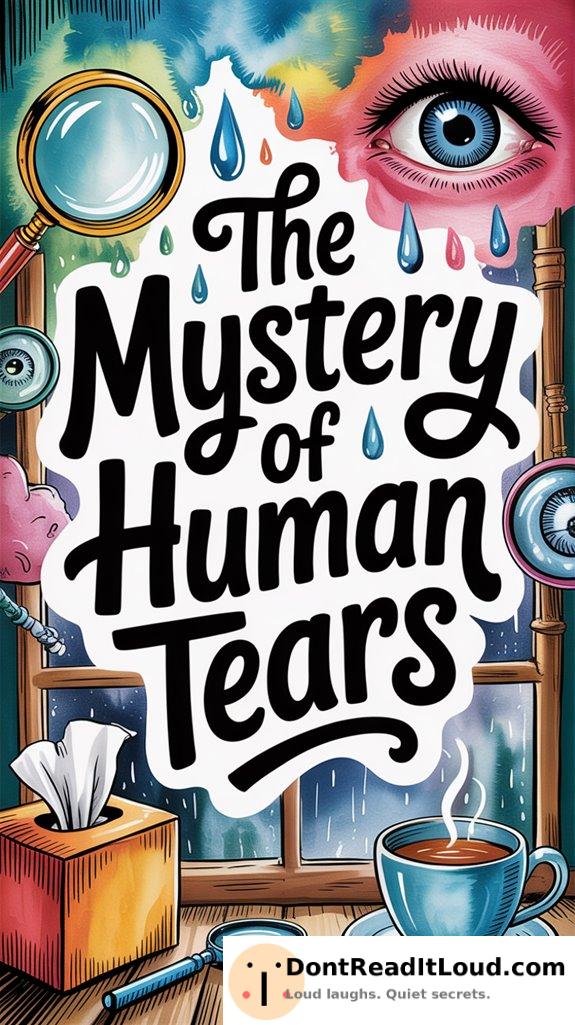
Tears are more than salty drops; they’re a complex blend from your tireless lacrimal glands, vital for eye health. Crying goes beyond biology, serving as a silent language when words fall short and deepening human connections. Cultural differences abound—crying may show respect at Japanese funerals or express joy at Italian weddings. This emotional response draws empathy and brings people together. Exploring tears reveals the intricate mysteries behind our emotional lives.
The Biological Composition of Tears
Although often overlooked, the biological composition of tears is surprisingly complex. Imagine this: your lacrimal glands act like tireless engineers, producing tears that keep your eyes moist and expressive.
These unsung heroes create a unique mix of electrolytes, proteins, and enzymes, making tears as fascinating as a backyard science experiment.
While you might assume tears are just salty drops, they’re more like a gourmet soup. Electrolytes like sodium, potassium, and calcium help maintain healthy eyes and clear vision.
Tears as a Means of Communication
Why do tears often speak louder than words? Sometimes, it’s impossible to express deep feelings when you’re overcome with emotion. Tears offer a unique release, letting you communicate when words fail. They cut straight through confusion, making your feelings clear without a single sentence.
Besides offering relief, tears can also strengthen social bonds. Picture this: you’re watching a sad movie, and your friend starts crying with you.
Suddenly, you both feel closer, connected by shared emotion. Tears reveal vulnerability, inviting empathy and turning a quiet moment into a shared experience.
The Psychological Role of Crying
When you cry, your mind engages in a complex process that goes beyond simple emotional release. It’s like your brain throwing a party where everyone wears waterproof mascara. Crying acts as your brain’s multitool—letting out emotions while building social connections.
Picture tears as the ultimate party icebreaker, helping you bond with others through shared vulnerability.
Your tears can signal, “Help, I’m overwhelmed!” without needing words. This emotional release often draws people closer, turning your tear-streaked face into a friendship magnet.
Cultural Perspectives on Crying
Understanding the psychological significance of tears opens the door to exploring how different cultures view crying. Envision this: you’re at a Japanese funeral, and everyone’s sobbing in unison. It’s not just emotional expression; it’s a cultural ritual. In Japan, crying in such settings shows respect.
Meanwhile, in Italy, tears flow freely at weddings, expressing joy, affection, and sometimes frustration over a poorly cooked meal.
But let’s flip the coin. In an American office, tears might prompt concerned glances or awkward questions. Many Americans consider crying something best kept private.
Yet, in some parts of the world, people even hire mourners to weep at funerals. Imagine being paid to cry at someone’s memorial! So, the next time you find yourself tearing up, remember that every culture sees crying through its own unique lens.
Conclusion
You’ve explored the fascinating world of human tears, learning about their biological makeup, role in communication, and psychological effects. Tears go beyond being a simple physical reaction; they allow us to express feelings and forge connections. Different cultures assign various meanings to crying, but it always represents vulnerability and honesty. The next time you cry, remember its deeper meaning—tears reflect your innermost emotions and your bonds with others.



